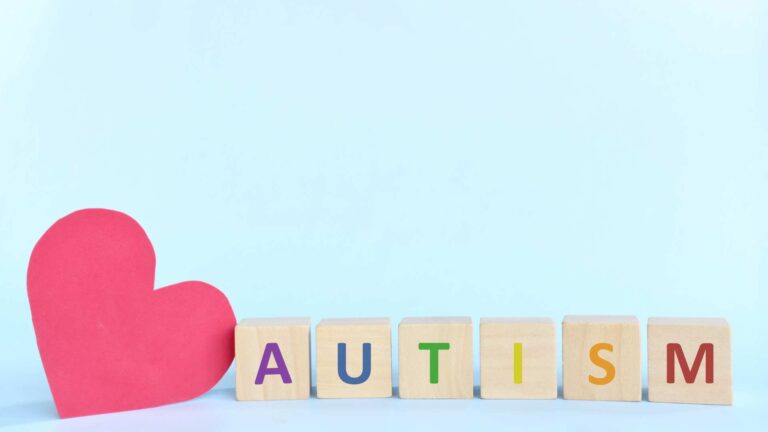Why is it challenging for individuals with autism to maintain eye contact?
We often say that individuals with Autism Spectrum Disorder (ASD) are unique; what one person experiences, another may not. There are varying levels of severity and unique characteristics among individuals with ASD. However, specific symptoms or general characteristics, such as the lack of eye contact in autism, are part of the diagnostic criteria.
So, why is it challenging for individuals with autism to maintain eye contact? It’s important to remember that individuals with ASD typically struggle with both verbal and non-verbal communication. They may not understand this form of communication or may even feel uncomfortable or stressed by it.
Let’s delve into this topic further in this blog by Texas ABA Centers, exploring eye contact in autism and why it’s something we should seek to understand rather than change in individuals.
Why Is Eye Contact Important?
Society considers eye contact to be a fundamental aspect of human interaction, serving as a nonverbal signal that communicates attention, interest, and empathy. Beyond its superficial appearance of social convention, eye contact plays a crucial role in communication. It serves to establish rapport and trust between people. In conversations, subtle changes in eye contact convey nuances of engagement, guiding the flow of interaction.
A study conducted by the National Library of Medicine utilized a technique known as hyperscanning functional magnetic resonance imaging (fMRI). This method observes brain activity during real-time (online) and delayed (offline) eye contact situations. The researchers discovered that continuous interaction via eye contact activates a part of the brain known as the limbic mirror system. This system includes two significant areas: the anterior cingulate cortex (ACC) and the anterior insular cortex (AIC). These regions are critical in fostering empathy and comprehending the emotions of others.
Moreover, eye contact enhances nonverbal communication by providing crucial contextual cues that complement spoken words. It aids in the interpretation of social signals, allowing individuals to discern underlying emotions and intentions. Whether in professional settings or personal encounters, the ability to read and respond to these cues is essential for effective communication and relationship-building.
Understanding Eye Contact in Autism
Sometimes, it can be perceived as rude if someone avoids eye contact while speaking to them. However, it’s important to note that this behavior doesn’t necessarily indicate rudeness. There are many reasons why someone may not feel comfortable making eye contact, or individuals may face additional challenges that affect their ability to do so.
Unlike the general population, individuals with autism may experience difficulties with eye contact stemming from sensory sensitivities, social challenges, and differences in communication styles. The intense sensation of locking eyes with another person may trigger distress, prompting to avoid or minimize eye contact as a coping mechanism.
While eye contact might be a natural and intuitive aspect of social interaction, for those on the autism spectrum, it can produce discomfort, anxiety, or confusion and even physical effects like nausea, tremors, and overheating, according to Plos One study.
A key difference lies in the interpretation of social cues conveyed through eye contact. While neurotypical people effortlessly decipher subtle changes in gaze to discern emotions and intentions, neurodiverse people may have difficulty interpreting these signals accurately.
ABA Therapy Helps Improve Communication Skills
Applied Behavior Analysis (ABA) offers interventions designed to enhance communication skills and foster meaningful connections. Unlike traditional approaches that aim to “normalize” individuals, ABA therapy adopts a person-centered approach, focusing on empowering individuals to navigate the complexities of communication in their unique way.
ABA therapy lies in the principle of individualization, recognizing that each person with autism possesses unique strengths, challenges, and communication styles. Rather than imposing rigid expectations or forcing conformity, ABA therapists work collaboratively with individuals and their families to identify personalized goals and strategies for communication enhancement.
Moreover, one of the primary objectives of ABA therapy is to break down communication barriers by targeting specific skills and behaviors that facilitate social interaction. This method may include teaching foundational skills such as eye contact, turn-taking, and nonverbal communication, as well as more advanced skills like expressive language and social pragmatics.
Texas ABA Centers and Autism Social Skills
At Texas ABA Centers, we understand that it must be difficult for parents, caregivers, and individuals diagnosed with autism to not conform to social norms and perhaps feel excluded because of the way they navigate the world.
At our Austin, Dallas, and Houston centers, our ABA specialists help individuals on the spectrum communicate confidently and effectively, opening up a world of opportunities for personal growth and social engagement within their capabilities and comfort.
Learn more about how we can help your child navigate the day-to-day with proven tools and customized approaches. Call us at (877) 771-5725 or schedule a free appointment with our specialists.








